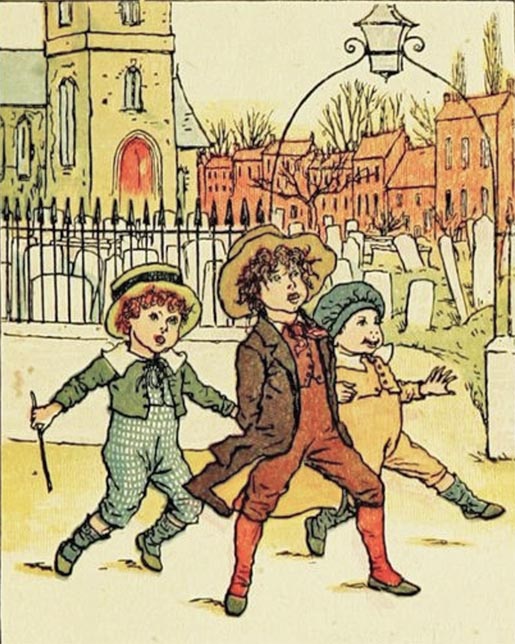Jolly Boys
We’re all jolly boys, and we’re coming with a noise,
Our stockings shall be made
Of the finest silk,
And our tails shall trail the ground.

Origin
The rhyme known as Jolly Boys was printed in Kate Greenaway’s Mother Goose; or, The Old Nursery Rhymes(1881). In that influential Victorian collection, it appeared with one of Greenaway’s signature illustrations of children in Regency-style dress. Earlier anthologies like Halliwell’s Nursery Rhymes of England do not seem to include it, so Greenaway’s edition is the earliest firmly traceable print version. Later reprints sometimes introduced small variations in the middle lines, but the core text remained the same.
Meaning
On the surface, this is a simple boast: children proclaiming themselves “jolly boys,” decked out in silk stockings with long coat-tails sweeping the ground. But the exaggerated finery gives the verse a comic edge. It reads less like a serious claim and more like parody — the kind of chant children might use to send up adult pretensions.
Scholars of childlore often note how verses like this blur the line between imitation and mockery. Middle-class boys might march around pretending to be gentlemen, yet the very act of shouting about silk stockings and dragging “tails” turns it into a joke. Whether or not it began as deliberate satire, the rhyme works perfectly as a caricature of trying too hard to look respectable.
Cultural Background
Jolly Boys belongs to the tradition of short parade or street chants — verses children could recite in games, skipping, or mock marches. The rhythm is steady and chant-like, easy for a group to shout together.
Kate Greenaway’s decision to include it in her 1881 Mother Goose shows how Victorian editors often blended old classics with smaller, less widespread jingles. Her elegant illustrations gave such rhymes new life, and helped carry even these short, whimsical verses into the mainstream of nursery lore.

